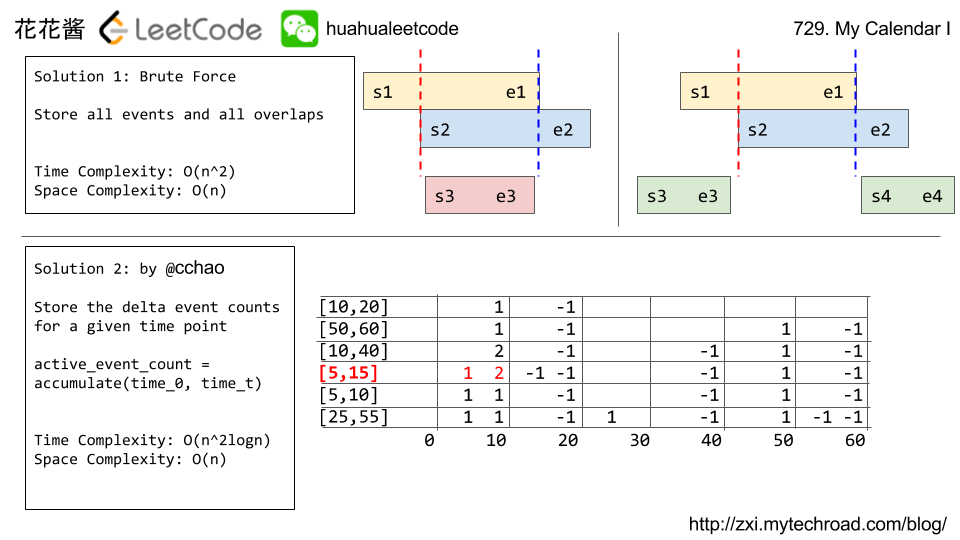Problem
A rectangle is represented as a list [x1, y1, x2, y2], where (x1, y1) are the coordinates of its bottom-left corner, and (x2, y2) are the coordinates of its top-right corner.
Two rectangles overlap if the area of their intersection is positive. To be clear, two rectangles that only touch at the corner or edges do not overlap.
Given two (axis-aligned) rectangles, return whether they overlap.
Example 1:
Input: rec1 = [0,0,2,2], rec2 = [1,1,3,3] Output: true
Example 2:
Input: rec1 = [0,0,1,1], rec2 = [1,0,2,1] Output: false
Notes:
- Both rectangles
rec1andrec2are lists of 4 integers. - All coordinates in rectangles will be between
-10^9and10^9.
Solution: Geometry
Time complexity: O(1)
Space complexity: O(1)
|
1 2 3 4 5 6 7 8 9 |
// Author: Huahua // Running time: 0 ms class Solution { public: bool isRectangleOverlap(vector<int>& rec1, vector<int>& rec2) { return rec1[0] < rec2[2] && rec2[0] < rec1[2] && rec1[1] < rec2[3] && rec2[1] < rec1[3]; } }; |
